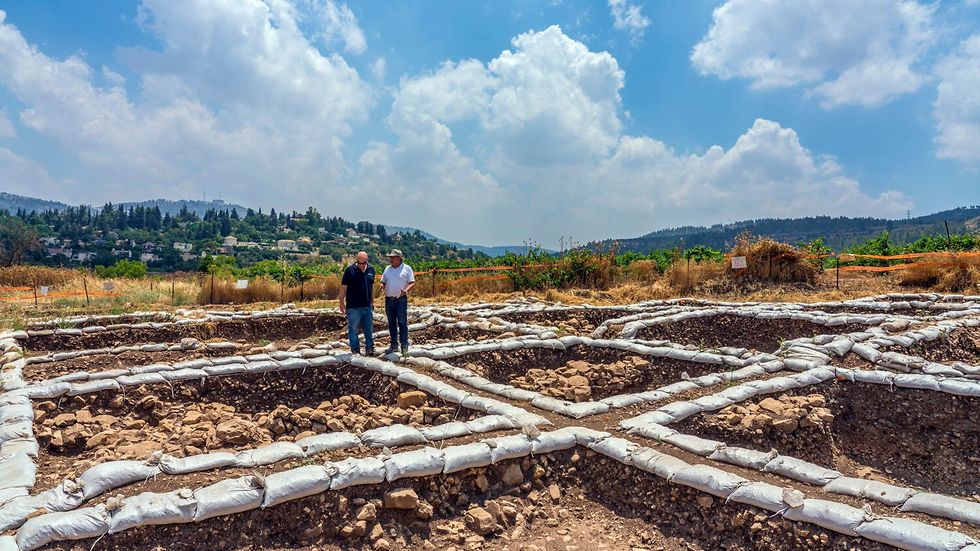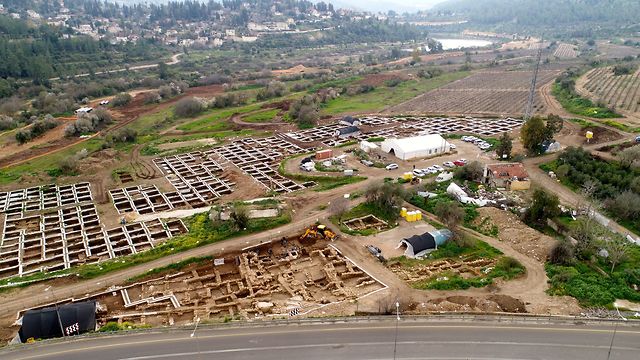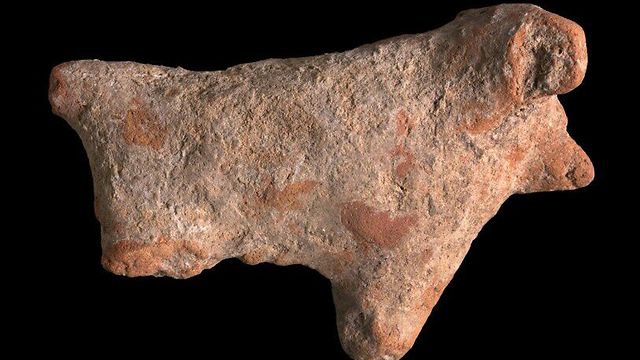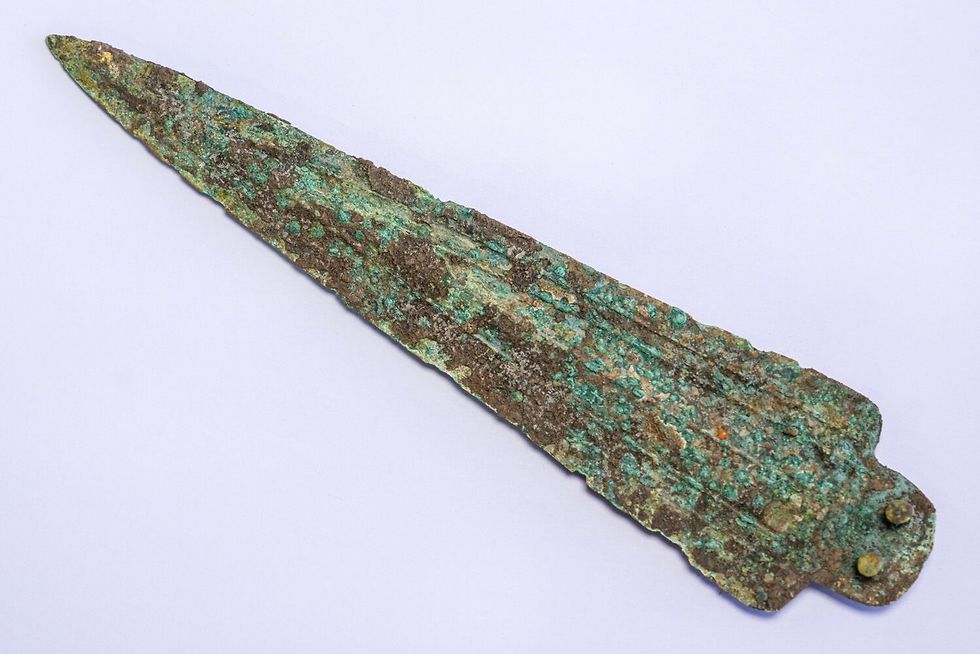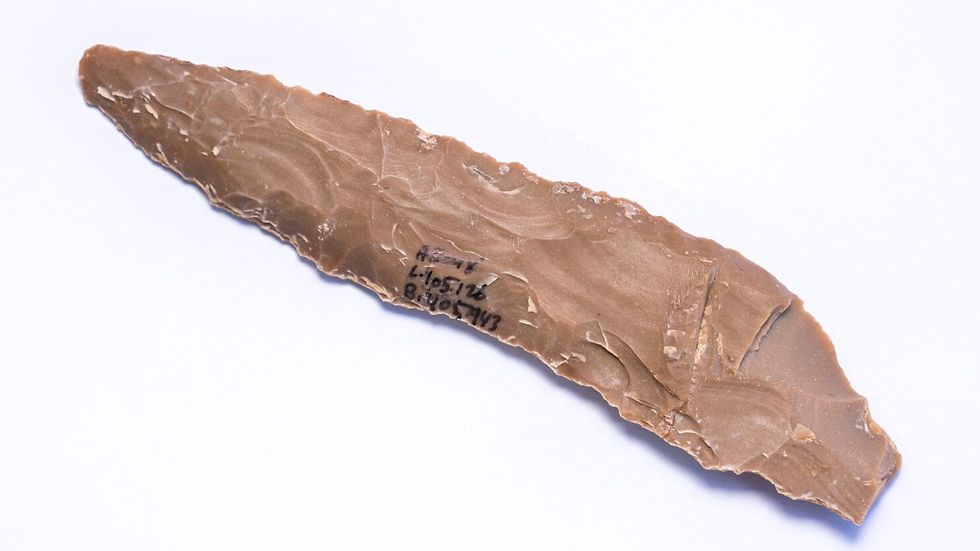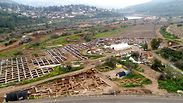
9,000-year-old Neolithic settlement unearthed west of Jerusalem
Biggest of its kind in Israel, and one of the biggest in Mideast, a unique Neolithic site is unearthed in Motza, boasting the all the splendors of the transition from hunting and gathering to agriculture, including burials, jewelry, ritual figurines and testimony to ancient trade routs
The unique site boasts architecture, arrow heads, jewelry and figurines crafted by the peoples who domesticated plants and animals during the Agricultural Revolution and shaped the Middle East into what we know it to be to this day.
The Motza site is located some five kilometers west of Jerusalem, near several springs and on the banks of Wadi Sorek, within a fertile valley thought which people have been hiking up to Jerusalem from the Shfela region since ancient times.
These optimal conditions are a central reason for long-term settlement in this site, from the Epipaleolithic Period, around 20,000 years ago, to the present day.
According to Dr. Hamoudi Khalaily and Dr. Jacob Vardi, excavation directors at Motza on behalf of the Antiquities Authority, "this is the first time that such a large-scale settlement from the Neolithic Period – 9,000 years ago – is discovered in Israel. At least 2,000 – 3,000 residents lived here – an order of magnitude that parallels a present-day city!"
The excavations revealed large buildings, including rooms that were used for living, as well as public facilities and places of ritual.
Between the buildings, alleys bearing evidence of the settlement's advanced level of planning were unearthed. In the buildings, plaster was sometimes used for creating floors and for sealing various facilities.
"In a place where people live, there are dead people as well," said archaeologists. Burial places have been exposed in and amongst the houses, into which various burial offerings have been placed – either useful or precious objects, believed to serve the deceased in the next world. These gifts testify that during this ancient period, the residents of the site had relationships with faraway places for exchange purposes.
Unique stone-made objects were found in the tombs, made of an unknown type of stone, as well as items made of obsidian (volcanic glass) from Anatolia, and seashells, some of which were brought from the Mediterranean Sea and some from the Red Sea.
During the excavations, archaeologists revealed artistic hand-made stone bracelets designed in several styles. "Due to the size of the bracelets, we estimate that they were mainly worn by children", said researchers. "We also found carefully crafted alabaster beads, as well as medallions and bracelets made of mother of pearl".
Many flint tools manufactured on the site were unearthed, including thousands of arrowheads that were used for hunting, and possibly for fighting as well, axes used for tree-felling, and sickle blades and knives.
Another exciting discovery was stone storage sheds, which contained a huge quantity of legumes, especially lentils, preserved despite the 9,000 years that had passed.
Animal bones found on the site show that the settlement's residents became increasingly specialized in sheep-keeping, while the use of hunting for survival gradually decreased; this exemplifies the Neolithic Revolution at its height.
The Excavation project was initiated and financed by the Netivei Israel Company (the National Transport Infrastructure Company), as part of the Highway 16 Project set to build a new entrance road to Jerusalem from the west.










